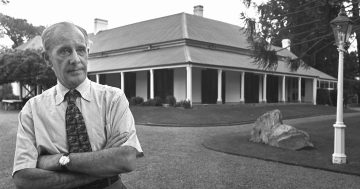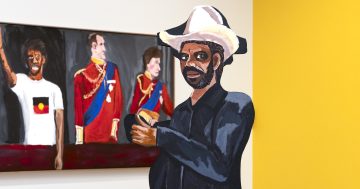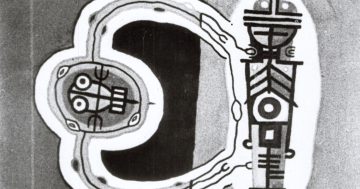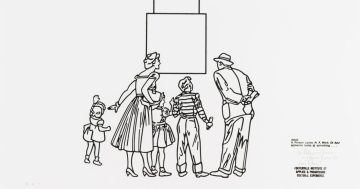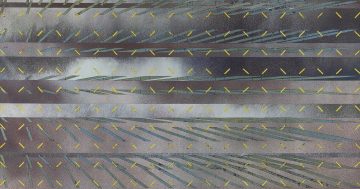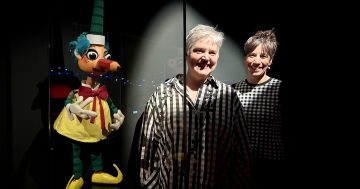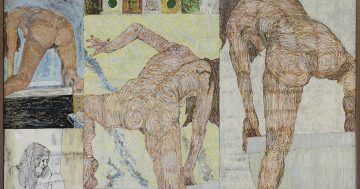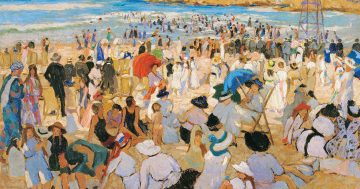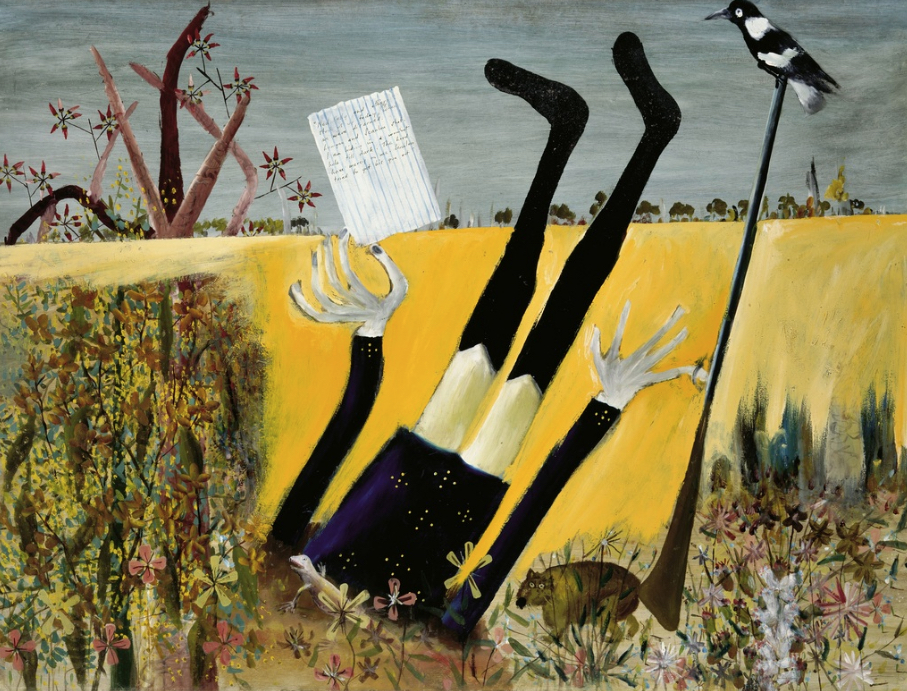
Sidney Nolan Policeman in Wombat Hole (1946), part of the Ned Kelly series. Photo: Canberra Museum and Gallery.
Sidney Nolan is one of the major figures in 20th-century Australian art, and his invention of the emblematic figure of Ned Kelly — arguably the most famous icon in Australian art — is engraved on the national psyche.
Nolan was also a very uneven artist with a vast output. Barry Pearce, who curated Nolan’s major retrospective exhibition in Sydney in 2007, calculated that Nolan’s oeuvre, in paintings alone, stood at about 35,000 works.
Although the Nolan Estate has disputed this estimate, it is indisputable that the artist believed in the scattergun technique of art production, knowing that, ultimately, some of his pieces would hit their target while others would be sorted out by posterity.
Did the artist know which of his works were gems and which were simply gilded chestnuts? Although in response to my question, he told me that “posterity is a bitch and she takes what she wants”, I feel that secretly he had a good sense of what he considered as the strength of his oeuvre.
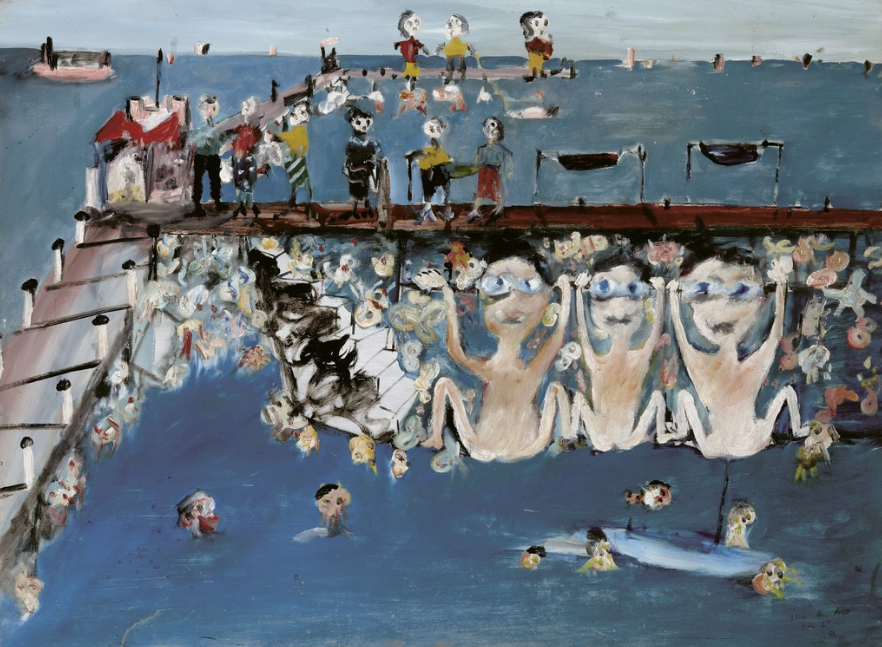
Sidney Nolan’s Under the Pier (1945) is a relatively early work in the artist’s career. Photo: Canberra Museum and Gallery
In 1974, Nolan selected 24 of his finest works, including 15 paintings from the 1940s Kelly series, and gifted them to the nation.
Subsequently, the artist bought back some of his paintings and continued to gift further pieces to the national Nolan Collection to be displayed at Lanyon. He fell in love with rural Lanyon, which epitomised the spirit of much of his art.
At the time of his death in 1992, the Nolan Collection had grown to 141 works.
Sadly, after 2007, the collection moved from the specially built Nolan Gallery at Lanyon to the Canberra Museum and Gallery in Civic where parts of the Nolan Collection are displayed in the upstairs gallery. It was argued at the time that Lanyon was too exposed to bushfire risk and that more tourists would see the works if they were on show in the city centre.
A second Nolan treasure in Canberra is the huge, sprawling Riverbend series, which the artist painted on nine large panels between 1964 and 1965. The painting relates to Ned Kelly and the artist’s childhood memories.
The ANU acquired Riverbend, and after spending many years in the Chifley Library, it found a permanent home in its own gallery at the ANU Drill Hall Gallery. The panels are intended to form an arc that would wrap around the viewer to create an immersive experience and were displayed in this manner at the university.
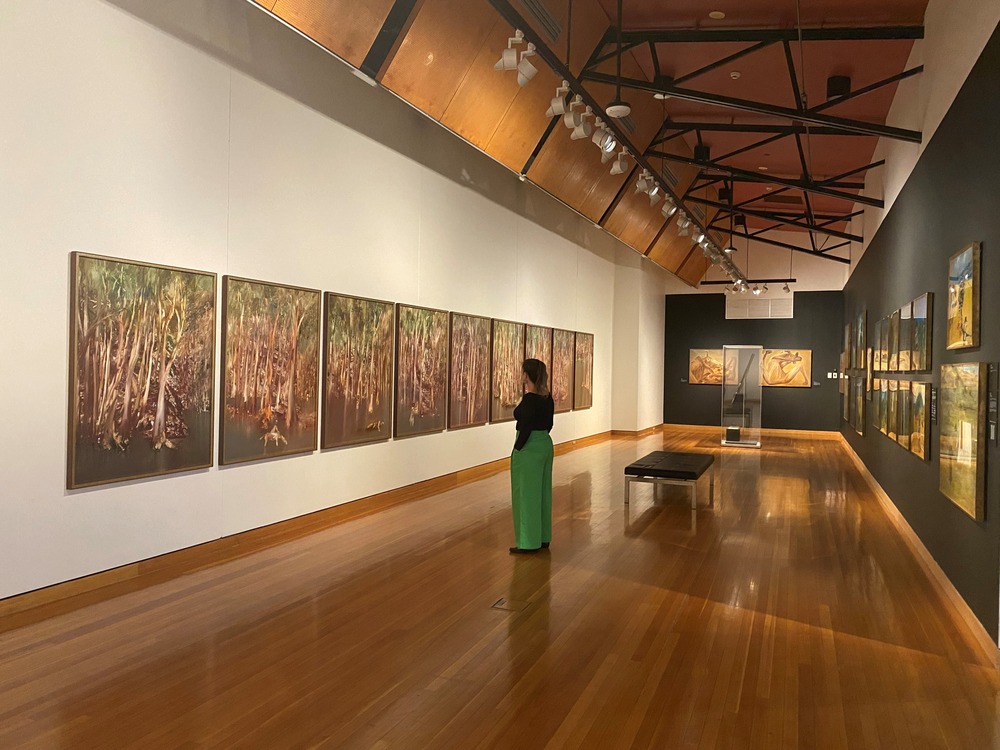
Sidney Nolan’s giant Riverbend work from 1964-65 is on loan from the ANU Art Collection. Photo: Canberra Museum and Gallery.
As the Drill Hall Gallery is undergoing renovations and is closed for the first half of this year, an opportunity presented itself to display Riverbend at CMAG in conjunction with 24 Nolan paintings from the Nolan Collection.
There is an interesting dialogue between the Kelly paintings from the 1940s and the Kelly paintings from the 1960s, Nolan’s changing attitude to landscape, and the figure of the fugitive.
Whereas in the 1940s, Nolan openly identified with the outlaw and, to some extent, viewed himself as being on the run after he had deserted from the Australian Army, 20 years later, Kelly had become something of a universal symbol of alienation.
Nolan commented that for his symbol of alienation, he took Kazimir Malevich’s Black Square, superimposed on the Australian bush, as a symbol of someone not belonging in their environment.
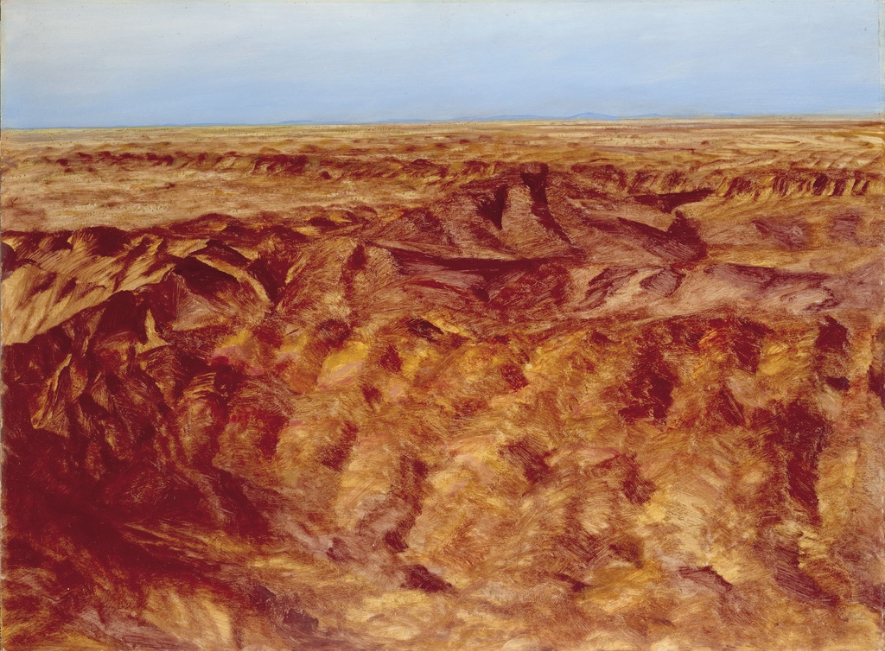
Sidney Nolan’s Central Australia (1950) is a mid-career work. Photo: Canberra Museum and Gallery.
There is also a huge development in technique from the simplified starkness of his early paintings in the shining surface of Ripolin enamel to the lush and sophisticated colour-saturated later oil paintings. The selection of paintings from the CMAG collection also includes some of the classic Central Australian desert images and Nolan’s very early urban seascapes.
One disappointment with the CMAG exhibition is the unsympathetic display of the Nolan paintings, where a bit of effort could have been made to replicate the curve of Riverbend to enhance the viewing experience.
This notwithstanding, the Nolan exhibition presents a rare opportunity to see two of the great Nolan treasures held in separate collections in Canberra brought together for a wonderful celebration of the genius of one of Australia’s greatest 20th-century artists.
Sidney Nolan is at the Canberra Museum and Gallery until 28 July. The free exhibition is open Monday to Friday from 10 am to 4 pm and Saturday and Sunday from 12 noon to 4 pm.
Sasha Grishin is a critic and writer.
Original Article published by Sasha Grishin on Riotact.


